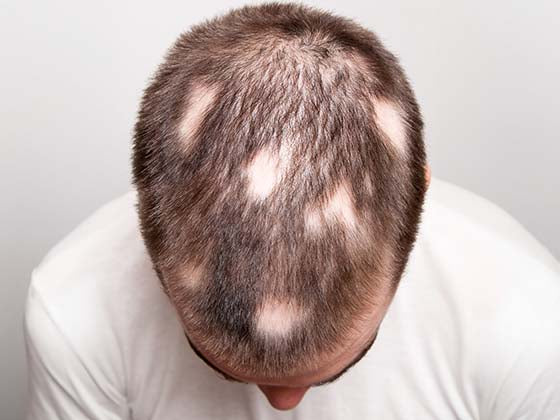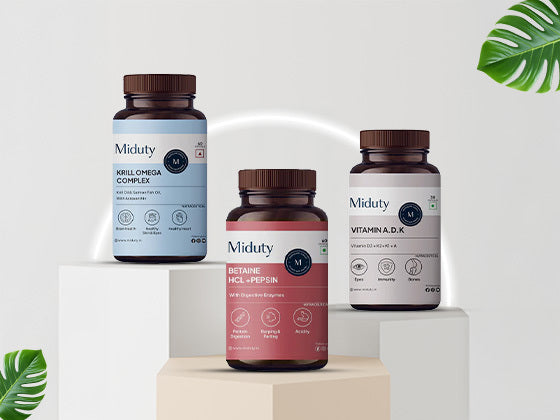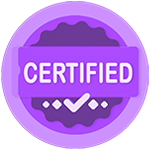Wearing breathable materials and applying specific products to prevent or absorb perspiration may effectively reduce breast sweat. A dermatologist may be able to assist if you experience excessive perspiration. Breast sweat is a prevalent issue that affects a significant number of individuals, particularly those with larger breasts, during exercise or in warmer weather. This blog provides a comprehensive analysis of the causes and the most effective solutions for the prevention or management of breast perspiration.
Why Does Underboob Sweat Happen?

Underboob sweat occurs when sweat collects beneath the breasts, particularly in skin folds where air circulation is limited. The reasons for this phenomenon and the factors that contribute to it are as follows:
-
Regulation of body temperature: The body's natural mechanism for cooling itself is to generate sweat. The area beneath the breasts is a warm, enclosed space that is a prime location for perspiration.
-
Skin-on-skin contact: The lower portion of the breast, which is in contact with the chest wall or upper abdomen, causes a reduction in circulation and an increase in perspiration by trapping moisture and heat.
-
Lack of air circulation: Bras and clothing typically cover the underboob area, limiting airflow and making it difficult for sweat to evaporate.
-
Breast size and shape: Larger breasts or specific shapes can trap more heat and cause more friction, resulting in increased sweat production.
-
Physical activity: The friction and body heat generated by movement during walking, working out, or even regular daily activities can result in an increase in perspiration production in this region.
-
Environmental factors: Sweating is more prevalent in enclosed areas and pleats, such as under the breasts, during hot, humid weather.
-
Hormonal fluctuations: Sweat production may be elevated by hormonal changes associated with menstruation, pregnancy, menopause, or medical conditions such as hyperthyroidism.
Common Causes of Sweating in the Breast Area

Sweating in the breast region is a prevalent occurrence and is typically not harmful; however, it can be uncomfortable or irritating. The most prevalent causes of breast perspiration include:
-
Heat and humidity: Sweating is a natural response to warm climates or hot interior environments. The breast area, particularly the underside, is susceptible to restricted airflow and retained heat.
-
Physical activity: The body produces a higher amount of sweat during exercise or daily duties. Friction is increased by the skin-on-skin contact beneath the breasts, resulting in increased localized perspiration.
-
Breast size and shape: Breasts that are larger or more full tend to generate more skin creases and are more susceptible to retaining heat and moisture. The absence of ventilation in those folds results in an increased production of perspiration.
-
Tight or non-breathable clothing: Bras or tops made from synthetic fabrics (such as polyester) can contain moisture and prevent evaporation. Tight bras can compress the area, resulting in increased sweat accumulation and reduced airflow.
-
Hormonal fluctuations: Excessive perspiration may be precipitated by hormonal fluctuations caused by menopause, pregnancy, menstruation, or conditions such as PCOS. Sudden perspiration in the chest and breast region is frequently a symptom of hot flashes.
-
Anxiety or tension: The body's fight-or-flight response is triggered by emotional stress, which can result in sweating in areas that are not typical, such as the chest.
Factors That Exacerbate Sweat and Skin Irritation

The primary factors that exacerbate skin irritation and perspiration, particularly in sensitive areas such as the area under and between the breasts, are
-
Friction and skin-on-skin contact: The production of sweat and the irritation of the skin are both exacerbated by repeated rubbing, which can be caused by movement or inadequately fitting bras. It may result in rashes, chafing, or intertrigo, a yeast-related skin inflammation that affects moist creases.
-
Tight or non-breathable clothing: Clothing that is too tight or lacks breathability: Synthetic fabrics, such as polyester or nylon, retain moisture and heat. Airflow is diminished, and sweating and irritation are exacerbated by tight-fitting bras or blouses.
-
Hot and humid environments: Particularly in regions with inadequate ventilation, such as beneath the breasts, elevated temperatures induce elevated perspiration. The skin remains damp due to the fact that humidity impedes the evaporation of perspiration.
-
Hormonal changes: Sweat production and skin sensitivity may be exacerbated by fluctuations associated with menstruation, menopause, pregnancy, or thyroid disorders. Damp skin and irritation are frequently the result of night sweats and hot flushes.
-
Physical activity: This is particularly true in the breast and genital regions, where exercise increases both heat and friction. The problem is exacerbated by the absence of appropriate support, such as a moisture-wicking sports bra.
-
Poor hygiene or infrequent cleansing: When combined with bacteria, grime, or residual body products (such as lotions or deodorants), sweat can obstruct pores and cause skin irritation. This may result in acne-like blemishes, fungal infections, or body odor.
-
Excess body weight: More skin folds and retained body heat can lead to increased sweating and areas that remain damp for a prolonged period of time due to excess body weight. This procedure establishes an environment conducive to the growth of bacteria, yeast, and fungus.
-
Use of irritating products: Contact dermatitis or exacerbated irritation on sensitive, moist skin may result from the use of fragranced lotions, harsh soaps, or specific deodorants.
Understanding Your Skin’s Response to Moisture

It is essential to comprehend the manner in which your skin reacts to moisture, particularly perspiration, to prevent infections, rashes, or irritation. The following is a description of the consequences of the epidermis remaining damp and the corresponding responses:
-
Decreases the skin barrier: The stratum corneum, the outermost layer of the skin, becomes softer and more susceptible to damage as a result of prolonged exposure to moisture (such as water, perspiration, or humidity). This renders it more susceptible to friction, pathogens, and irritants.
-
Increases friction and chafing: Damp skin is more susceptible to rubbing against clothing or other skin surfaces. This results in discomfort, redness, and chafing, particularly in folds such as those between the thighs or under the breasts.
-
Creates a breeding ground for microorganisms: Yeast, fungus, and microbes thrive in warm, moist environments. Infections such as intertrigo (a red, inflamed rash in skin creases), candidiasis (yeast infections), and folliculitis (inflamed hair follicles) may result from this, as well.
-
Triggers inflammation and itching: Inflammatory reactions, such as itching, scorching, or stinging, can be induced by wet or sweaty skin, which activates the immune system. Moisture may exacerbate flare-ups in individuals with sensitive skin or conditions such as eczema.
-
Reduces healing: Skin restoration is slowed by moist environments, which prevent natural exfoliation and maintain its softness. If left untreated, this can transform minor irritation into chronic skin issues.
Effective Solutions to Manage Underboob Sweat

Effectively managing underboob perspiration necessitates the prevention of skin irritation, the enhancement of airflow, and the reduction of moisture. To ensure that you remain dry and comfortable, the following is a compilation of time-tested solutions, ranging from daily habits to specific products:
-
Wear moisture-wicking bras: Select bras that are specifically engineered to wick perspiration away from your skin. In order to mitigate friction, seek out fabrics that diffuse moisture, mesh panels or ventilation zones, and wire-free support.
-
Employ anti-chafing and sweat-control products: Certainly, it is permissible to apply clinical-strength antiperspirant to the area beneath the breasts. For optimal outcomes, apply to bare skin at night. Anti-chafing lotions and gels.
-
Try bra liners or sweat pads: Consider using bra liners or perspiration pads. These products serve as a barrier between your skin and your bra by absorbing sweat. These options include disposable sweat pads and reusable fabric liners.
-
Maintain a calm and dry environment throughout the day: To refresh oneself in the middle of the day, utilize body wipes or cooling cloths. Stay in well-ventilated or air-conditioned areas whenever feasible. Consider employing a thermal water mist or a soothing body spray, such as Evian Facial Spray.
-
Select the appropriate attire: Wear blouses that are loose and breathable, such as those made from bamboo, linen, or cotton. Avoid synthetic materials such as polyester, which are known to trap heat, and tight-fitting shirts.
-
Keep proper hygiene: Shower on a daily basis (or more frequently if you are perspiring profusely). Thoroughly cleanse and gently wash the underboob area. Steer clear of detergents that are harsh or fragranced, as they have the potential to cause irritation.
Best Products to Reduce Sweat and Prevent Chafing

Here is a carefully selected selection of the most effective products for preventing chafing and reducing perspiration, particularly in areas that are prone to sweating, such as the inner thighs, underarms, or breasts. These are categorized to facilitate perusing based on your requirements.
Natural Remedies for Keeping the Area Dry and Comfortable

You have several effective options if you prefer natural remedies for managing underboob perspiration and maintaining a comfortable and dry environment. These can assist in the absorption of hydration, the reduction of friction, and the soothing of the skin, all without the use of synthetic chemicals or fragrances.
-
Cornstarch: After cleansing and rinsing, lightly dust under the breasts. Reduces friction and absorbs moisture.
-
Baking soda: Create a paste by combining a small quantity with water, apply sparingly, and rinse off after 10–15 minutes. Absorbs perspiration and neutralizes odor.
-
Arrowroot powder: Apply in the same manner as body powder. Highly absorbent and lightweight, this product is ideal for maintaining epidermis moisture. A gentler substitute for cornstarch
-
Coconut oil: Under clean, dried skin, apply a thin layer of coconut oil. Antibacterial, antifungal, and calming for skin that is irritated or chafed. Suitable for daily use
-
Apple cider vinegar (ACV): Dilute with water (1:1), apply with a cotton pad, cleanse, and dry. Controls odor, prevents bacterial growth, and stabilizes skin pH.
-
Aloe vera gel: To alleviate heat rash or irritation, apply unadulterated aloe vera gel (either from a plant or purchased from a store). Anti-inflammatory, cooling, and aids in the drying of minor rashes or irritation. Excellent treatment for post-workout pain
-
Tea tree oil (diluted): Apply 1–2 droplets to clean skin after mixing with a carrier oil such as coconut or jojoba. Antifungal and antibacterial, it can prevent yeast infections caused by perspiration. Provides a clear and odor-free complexion
Choosing the Right Fabrics and Bras for Moisture Control

The selection of appropriate fabrics and bras is crucial for the prevention of skin irritation and the regulation of underboob perspiration. Breathability, moisture-wicking properties, and a fit that supports without compressing are the most critical factors.
-
Moisture-wicking bras: Developed to regulate sweat during exercises or daily wear. It is frequently constructed with a moisture-control or breathable mesh interior.
-
Bras that are lightly structured or wireless: Reduce the friction and compression of the epidermis. Permit the circulation of air around and beneath the breasts.
-
Bras with mesh or ventilated panels: Increase airflow in high-sweat zones such as the underboob or back.
-
Cotton-lined bras: Soft and absorbent, especially for skin that is sensitive or prone to irritation.
-
Bra liners or inserts (optional add-on): Absorb sweat and form a barrier between your skin and the bra. Reusable and washable options are available in bamboo, cotton, or microfiber
Tips From Experts on Preventing and Treating Sweat Rash

The expert-approved methods for preventing and treating perspiration rash focus on areas where moisture is likely to accumulate, such as the groin, underarms, or skin folds. These strategies, which are recommended by dermatologists, are designed to alleviate inflammation, minimize friction, and maintain skin moisture.
-
Keep the area clean and dry: Ensure that the area is clean and dry by washing it daily with a mild, fragrance-free cleanser to eliminate bacteria, oil, and perspiration. Avoid rubbing the epidermis; instead, gently pat it dry. Use a cool blow-dryer on a low setting or a soft cloth to completely dry the skin folds.
-
Utilize a barrier cream or absorbent powder: Utilize talc-free powders, such as candisweat Dusting Powder and canesten 5 in 1 Antifungal Dusting Powder. To protect the skin from moisture and minimize friction, consider using a barrier cream (such as zinc oxide, petroleum jelly, or calendula salve).
-
Wear clothing that is both well-fitted and breathable: Select fabrics such as bamboo or lightweight cotton, as well as moisture-wicking undergarments. Stay away from garments that are excessively tight, as they can impede airflow and retain heat.
-
Decrease the likelihood of heat and sweat triggers: When feasible, remain in well-ventilated, chilly environments. Utilize a portable towel, fan, or calming body spray during high-sweat activities. Take pauses to dry off and reapply powder or barrier cream as necessary.
-
Use antiperspirants: Dermatologists frequently advise the use of clinical-strength antiperspirants, such as specific Dri and SweatBlock cloths, even under the breasts. For optimal efficacy and minimal irritation, apply at night.
How to Use Deodorants Safely Under Your Breasts

Deodorant or antiperspirant can be a safe and effective means of reducing moisture, odor, and irritation under the breasts, provided that it is used correctly. The following is a comprehensive guide to conducting the procedure safely, as recommended by dermatologists:
-
Start with clean, dry skin: You may either shower or delicately cleanse the affected area. Use a towel to thoroughly cleanse the area.
-
Select the appropriate product: If irritation is a concern, consider fragrance-free, natural, or formulations that are suitable for sensitive skin. If you desire odor control without the obstruction of perspiration, consider deodorants that are free of aluminum. Use a clinical-strength antiperspirant (such as SweatBlock wipes or Certain Dri) to regulate perspiration.
-
Apply sparingly: Apply a thin, uniform layer; a small quantity will yield significant results. It is advisable to refrain from applying multiple products simultaneously.
-
Allow it to absorb: Wait a few minutes before donning a bra or apparel. This serves to prevent skin friction and product transfer.
-
Monitor your skin: If you notice redness, itching, blistering, or a rash, stop using the product immediately. In the event of irritation, it may be beneficial to alternate days or transfer products.
Lifestyle Changes to Minimize Sweating in Hot Weather

Sweating can be considerably reduced during hot weather by implementing a few smart lifestyle changes, particularly in sensitive areas such as under the breasts. These strategies, which have been endorsed by dermatologists, are designed to ensure that you remain more comfortable and dry throughout the summer.
-
Dress strategically: Select fabrics that are lightweight and breathable, such as cotton, bamboo, linen, or moisture-wicking composites. Select apparel that is loose-fitting to promote air circulation and mitigate the accumulation of heat. Wear clothing that is pale in color, as it reflects sunlight rather than absorbing heat.
-
Time outdoor activities wisely: When scheduling outdoor activities, it is important to avoid the prime sun hours (11 AM – 3 PM) when the level of UV exposure and heat is at its highest. Take a trek or exercise in the early morning or late evening when the temperature is lower. When feasible, seek refuge in air-conditioned or shaded areas.
-
Maintain hydration: Consume an adequate amount of water throughout the day, with a minimum of 8–10 containers. Hydration is instrumental in the regulation of your internal temperature and the reduction of sweat production. Alcohol, caffeine, and spicy foods should be avoided as they have the potential to induce or exacerbate excessive perspiration.
-
Cool your body from the inside out: Consume chilled beverages, such as iced herbal infusions or water infused with mint or cucumber. Consume cooling foods, including cucumber, watermelon, yogurt, and leafy vegetables.
-
Utilize cooling accessories: For on-the-go respite, carry cooling towels, mini fans, or facial mists. For an additional cooling effect, refrigerate your body powders or bra inserts. In the event of overheating, apply ice packs or chilled water bottles to the chest or under the arms to facilitate a rapid cooling process.
When to Consult a Dermatologist for Persistent Issues

If you are experiencing persistent underboob sweat, rash, or irritation, it may be necessary to seek the advice of a dermatologist, particularly if household remedies and over-the-counter treatments have not been effective. It is imperative to be aware of the distinct signs and to seek professional advice for the stated reasons.
-
Rash doesn’t improve after a few days: If the rash does not improve within a few days, a dermatologist can ascertain whether it is a fungal, bacterial, or allergic reaction. This is particularly true if you have attempted to alleviate the condition with powders, balms, or natural remedies.
-
Experiencing intense itching, scorching, or pain: These symptoms may suggest candidiasis (yeast infection), intertrigo (inflammatory rash resulting from friction and moisture), and contact dermatitis caused by deodorants, fabrics, or laundry detergents.
-
Cracking, bleeding, or oozing skin: Secondary infections may necessitate prescription-strength topical or oral medications, as evidenced by skin cracking, bleeding, or seeping.
-
Chronic or recurrent symptoms: If you are experiencing frequent flare-ups, your dermatologist can determine the underlying causes (e.g., hormone imbalances, fungal overgrowth, or hyperhidrosis), suggest long-term strategies or medical treatments, and rule out rare but severe conditions (e.g., Hidradenitis Suppurativa).
-
The effectiveness of over-the-counter treatments is inadequate: If antifungal creams or granules are ineffective, a prescription antifungal, low-dose steroid, or combination treatment may be necessary. Formulated antiperspirants that are suitable for breast skin can also be recommended by a physician.
-
Apprehensive about the possibility of skin discoloration or scarring: Topical treatments or a personalized skin regimen may be necessary to ensure proper healing and prevent the development of long-term scars in cases of persistent erythema, hyperpigmentation, or thickened skin.
Final Thoughts on Managing Underboob Sweat

Underboob perspiration is entirely natural; however, it can result in irritation, discomfort, and even rashes or infections if not properly controlled. The good news is that you can maintain a drier, confident, and irritation-free complexion by incorporating the appropriate products, habits, and awareness of your body's requirements.
-
Be aware of the causes: Moisture accumulation beneath the breasts is influenced by heat, humidity, exercise, and restrictive apparel. In warm climates or during hormonal shifts, skin folds naturally trap heat and perspiration.
-
Prevention is key: Utilize anti-chafing balms, breathable fabrics, and moisture-wicking undergarments on a daily basis. Maintain the cleanliness and dryness of the area. If you are susceptible to sweat rash, apply barrier lotions or powders. If there is an issue with odor or excessive sweating, it may be beneficial to utilize clinical-strength antiperspirants or natural deodorants.
-
Pay attention to the voice of your skin: Do not disregard persistent erythema, itching, or discomfort. Begin by attempting mild, natural remedies; however, seek medical advice if symptoms persist for more than a week or deteriorate.
-
Adapt to the season: In hot weather, it may be necessary to take more proactive measures, such as reapplying powder midday and taking frequent showers. To maintain a calm body temperature and minimize accumulation, it is recommended that you rotate your fabrics and bras according to the season.
-
Small lifestyle tweaks go a long way: Hydration, the use of breathable garments, and the preservation of cool or shaded environments are all beneficial lifestyle modifications. Additionally, the production of sweat can be diminished by adhering to a nutritious diet and managing tension.









































